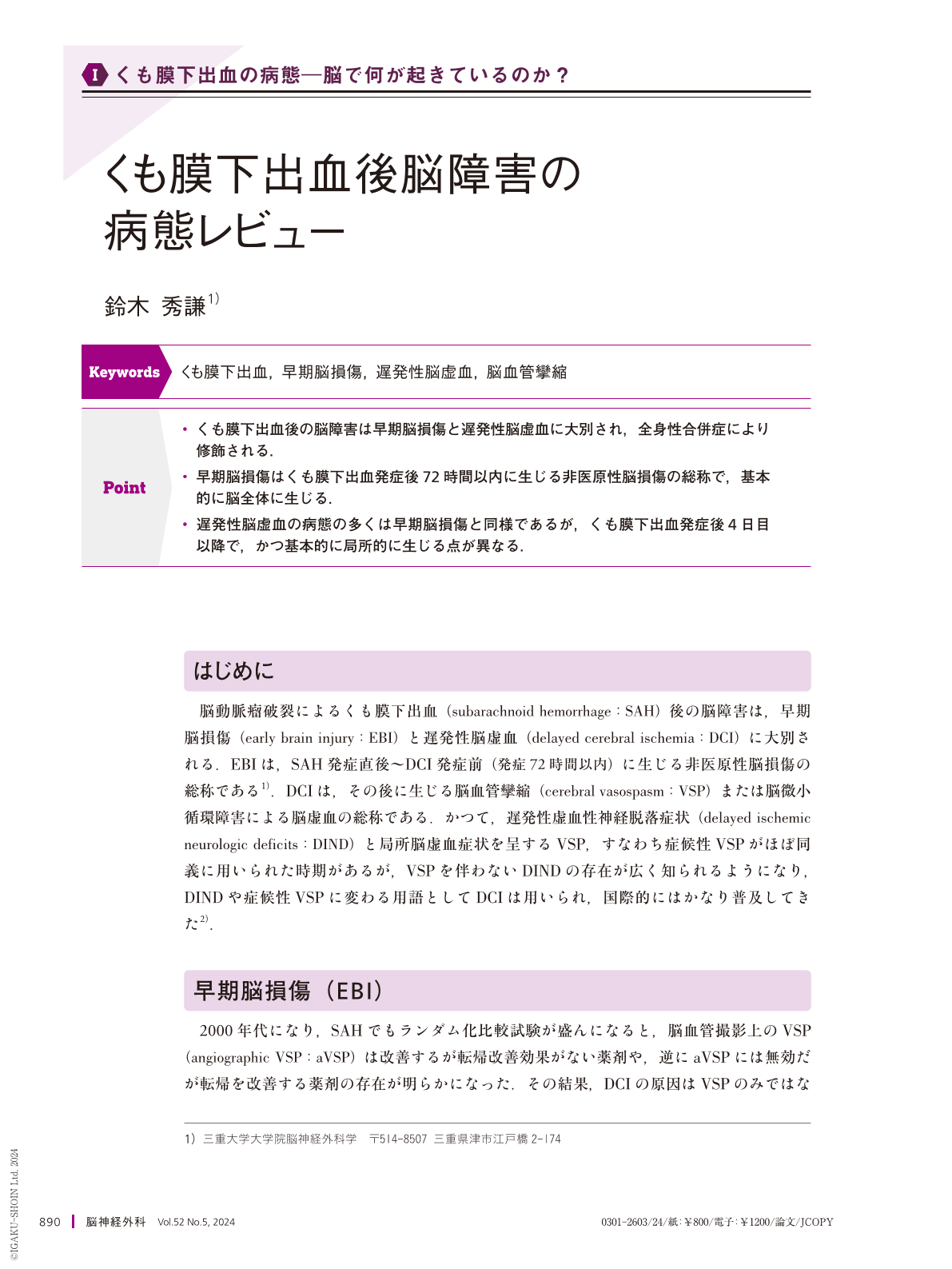Japanese
English
- 有料閲覧
- Abstract 文献概要
- 1ページ目 Look Inside
- 参考文献 Reference
Point
・くも膜下出血後の脳障害は早期脳損傷と遅発性脳虚血に大別され,全身性合併症により修飾される.
・早期脳損傷はくも膜下出血発症後72時間以内に生じる非医原性脳損傷の総称で,基本的に脳全体に生じる.
・遅発性脳虚血の病態の多くは早期脳損傷と同様であるが,くも膜下出血発症後4日目以降で,かつ基本的に局所的に生じる点が異なる.
Aneurysmal subarachnoid hemorrhage(SAH)causes brain injury and systemic complications, including cardiopulmonary dysfunction, which mutually affect each other. Post-SAH brain injury includes early brain injury(EBI)and delayed cerebral ischemia(DCI). EBI is a non-iatrogenic pathology occurring within 72 h of clinical SAH, primarily induced by increased intracranial pressure, subsequent transient global cerebral ischemia, and extravasated blood components. DCI typically develops between days 4 and 14 after clinical SAH because of erythrolysis(free hemoglobin)and EBI-mediated reactions. EBI and DCI share many pathologies, including large-artery spasm, microvascular spasm, microthrombosis, blood-brain barrier disruption, neuroinflammation, disturbance of venous outflow, and neuroelectric disturbances such as spreading depolarization and epileptic discharge. However, EBI and DCI differ not only in the timing of onset but also in their distribution, with EBI mainly occurring throughout the brain, while DCI occurs locally. Many substances, such as glutamic acid, cytokines, and matricellular proteins, mediate EBI and DCI pathologies. Further elucidation of EBI and DCI pathologies is essential for developing novel treatment strategies.

Copyright © 2024, Igaku-Shoin Ltd. All rights reserved.


